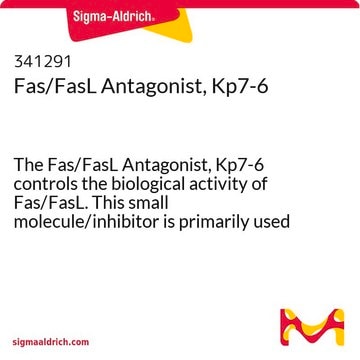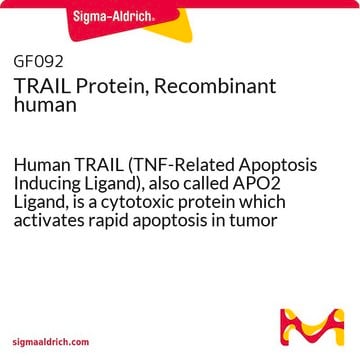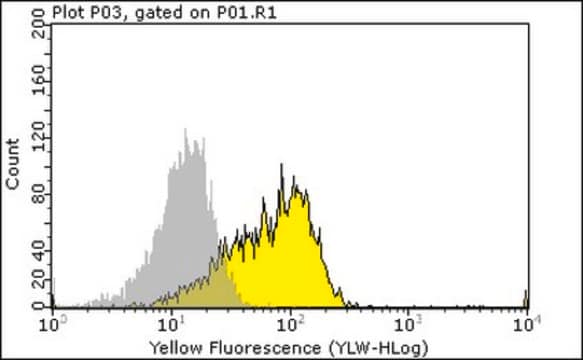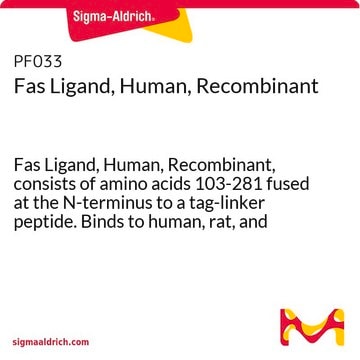05-338
Anti-Fas Antibody (human, neutralizing), clone ZB4
clone ZB4, Upstate®, from mouse
Synonyme(s) :
APO-1 cell surface antigen, Apo-1 antigen, Apoptosis-mediating surface antigen FAS, CD95 antigen, FASLG receptor, Fas (TNF receptor superfamily, member 6), Fas AMA, Fas antigen, apoptosis antigen 1, tumor necrosis factor receptor superfamily member 6, tu
About This Item
Produits recommandés
Source biologique
mouse
Niveau de qualité
Forme d'anticorps
purified immunoglobulin
Type de produit anticorps
primary antibodies
Clone
ZB4, monoclonal
Espèces réactives
human
Fabricant/nom de marque
Upstate®
Technique(s)
flow cytometry: suitable
neutralization: suitable
western blot: suitable
Isotype
IgG1
Numéro d'accès NCBI
Numéro d'accès UniProt
Conditions d'expédition
dry ice
Modification post-traductionnelle de la cible
unmodified
Informations sur le gène
human ... FAS(355)
Description générale
Spécificité
Immunogène
Application
Apoptose et cancer
Apoptose - Autre
Qualité
10-500 ng/mL of this antibody was incubated for one hour with human Fas-transfected cells and inhibited the anti-Fas (human, activating), clone CH11 (Catalog # 05-201). Cell viability was assessed using a WST-1 assay
Description de la cible
Forme physique
Stockage et stabilité
Remarque sur l'analyse
Autres remarques
Informations légales
Clause de non-responsabilité
Not finding the right product?
Try our Outil de sélection de produits.
Code de la classe de stockage
10 - Combustible liquids
Classe de danger pour l'eau (WGK)
WGK 2
Certificats d'analyse (COA)
Recherchez un Certificats d'analyse (COA) en saisissant le numéro de lot du produit. Les numéros de lot figurent sur l'étiquette du produit après les mots "Lot" ou "Batch".
Déjà en possession de ce produit ?
Retrouvez la documentation relative aux produits que vous avez récemment achetés dans la Bibliothèque de documents.
Notre équipe de scientifiques dispose d'une expérience dans tous les secteurs de la recherche, notamment en sciences de la vie, science des matériaux, synthèse chimique, chromatographie, analyse et dans de nombreux autres domaines..
Contacter notre Service technique








